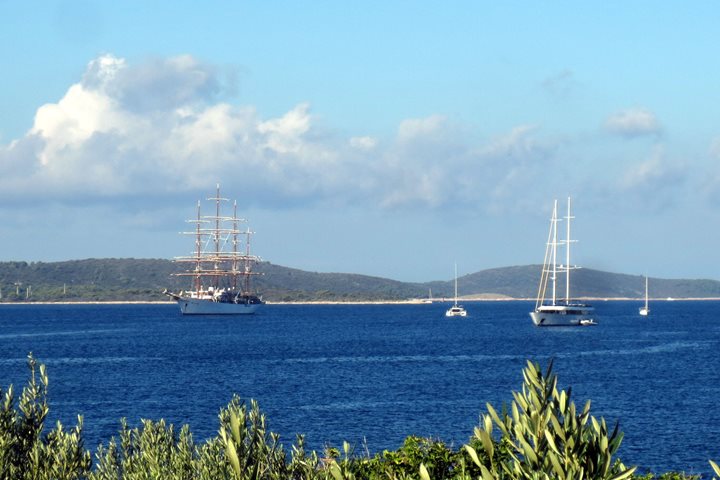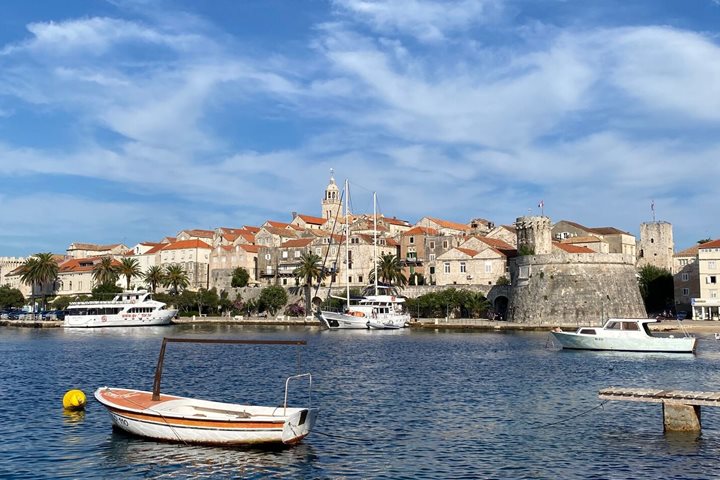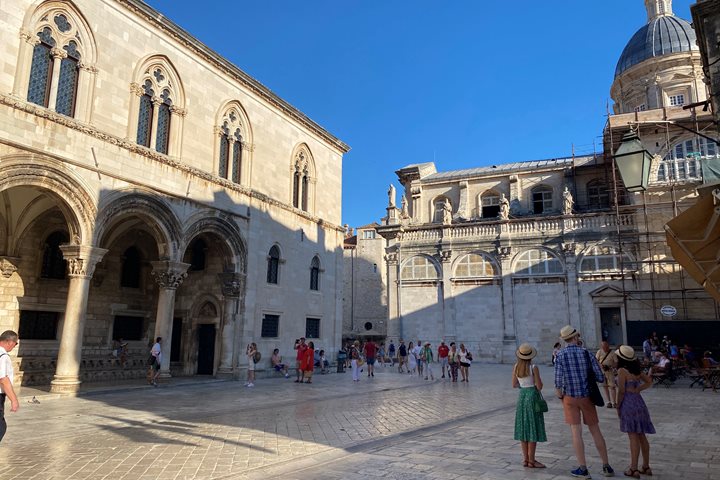We arrived off the south promontory of the ancient city of Dubrovnik at 7a.m. The sky was a limpid blue and the light from the sea dappled on the great stone walls of this walled medieval city. Immediately facing us across the entrance to the old harbor were the massive high walls of the fortress of St. John. The massive walls of Dubrovnik, just over a mile and a quarter in length, were built in the 10th century and reinforced over the years. They are almost 80 feet high in places and those facing the landside of the city are 20 feet thick. We took tenders into the harbor and landed at the North Pier immediately in front of the Sponza Palace.
We began our walking tour, stopping briefly before the church of St. Blaise, the patron saint of the city, and a monument to Italian Baroque architecture. It was completely redone in the 18th century by Marino Groppelli. We were given a brief description of the 15th century Rector’s Palace, the political and administrative center when Dubrovnik was known as the Republic of Ragusa. Walking along the great main street, the Stradun, we reached the entrance to climb to the top of the walls. There was much huffing and puffing but the view as we looked down and across the beautiful red tiled roofs was worth every step. After completing our circuit of the walls some chose to stay in town but most returned for lunch on Sea Cloud. We also visited the Franciscan Priory where we visited what surely must be the oldest continuously in use pharmacy in the world, first founded in 1317 and sine then continuing to provide medicines.
It was a hot sunny day and Tom O’Brien managed to arrange a swim off the Sea Cloud. Most jumped in and the sea was amazingly pleasant, not too warm or too cold. Following our refreshing swim, our local guide Marijana Radovan gave an informative talk on the history of Croatia.
After dinner we attended a private concert in the cloister of the Dominican Priory, which dates to 1315. The treasury of the Priory contains some remarkable items, among which were an 11th-century bible and a fabulous painting by the great Venetian Titian. Dubrovnik during the Renaissance was extremely wealthy with a merchant fleet of some 500 ships and they could afford to hire the finest craftsman and artists. The eight-member Klapa acapella group performed for us in the garden of the Priory. They were wonderful. Their songs were mostly spirited love ballads. They received a spirited round of applause and sold a great many CDs.
At the end of our concert some decided to stay in the old town for dinner. Dubrovnik at night is particularly beautiful, as the electric light is somehow made more beautiful as it shines against the crème color of the stone and the marble streets.
We went to bed after a full and enchanting day with expectations of our visit to the magical island of Korcula on Sunday morning.









